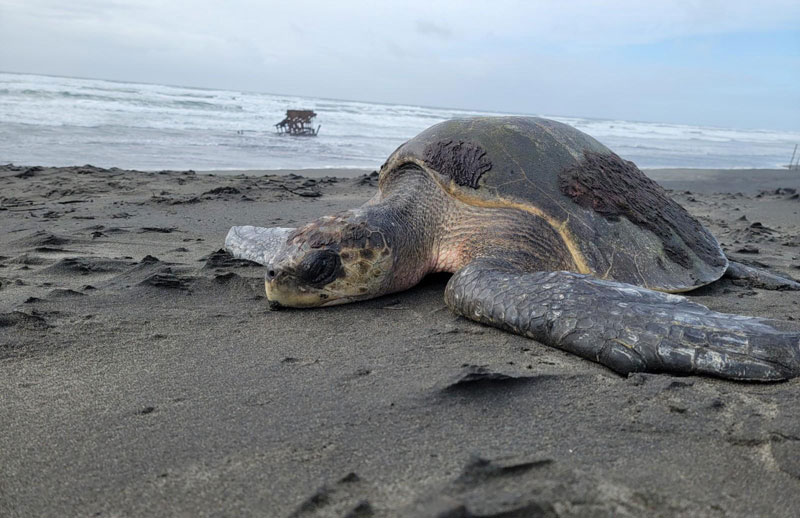It happens occasionally that non-native species are found along the chilly coastal waters of Oregon. In just this past week, two endangered Olive Ridley Sea Turtles washed up on local beaches. One found in Lincoln City did not survive, but another is expected to thrive for eventual re-release into a more suitable habitat.
Sea Turtles make their ocean homes far south of Oregon. Their habitat is the warm tropical waters south of the US border, so finding one this far north is a rare occurrence.
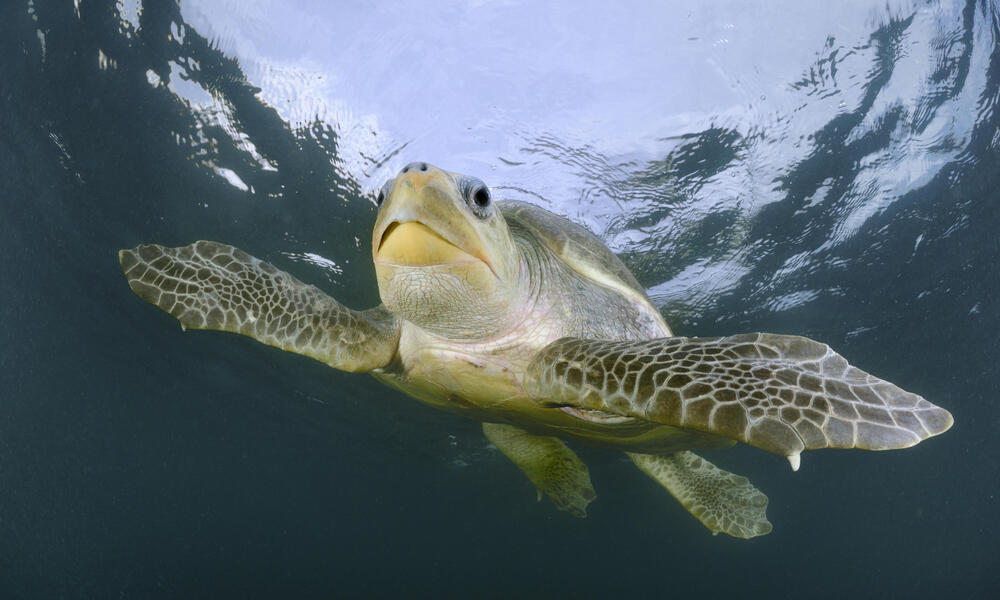
Female Olive ridley sea turtle (Lepidochelys olivacea) swimming from the open ocean towards the beach of Ostional, Costa Rica, to lay its eggs in the warm sand. / Image via / worldwildlife.org
On Wednesday, Samuel K. Gardner discovered a turtle near the Peter Iredale shipwreck in Hammond, Oregon, just south of Astoria. At the time, the gentle creature appeared dead, but Gardner quickly realized that the sea turtle was very much alive.
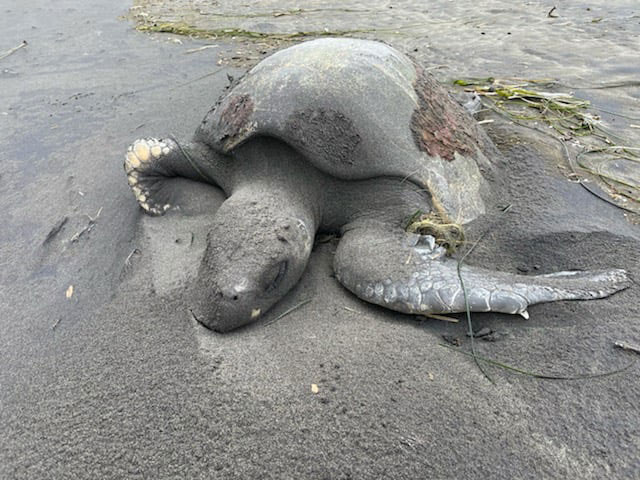
Image via / Samuel Gardner / Oregon Coast Beach Connection
“Shortly after finding the animal Samuel realized that it was still alive and contacted Seaside Aquarium,” employee Tiffany Boothe said. “Samuel was soon joined by Alec and Corinne Reeves who just happened to be walking on the beach.”
The tide was rising quickly, and knowing that the injured sea turtle was in danger of being swept out, Gardner and his companions acted quickly.
“As the tide continued to come in and the surf raged up the beach, Samuel and Alec decided that it would be best to get the turtle to a more secure location,” Boothe said. “Usually, it is best not to move a sea turtle until responders arrive but in this case, it was necessary if the turtle was going to survive. Samuel and Alec carried the turtle over a mile and were able to meet up with the responding staff from Seaside Aquarium.”
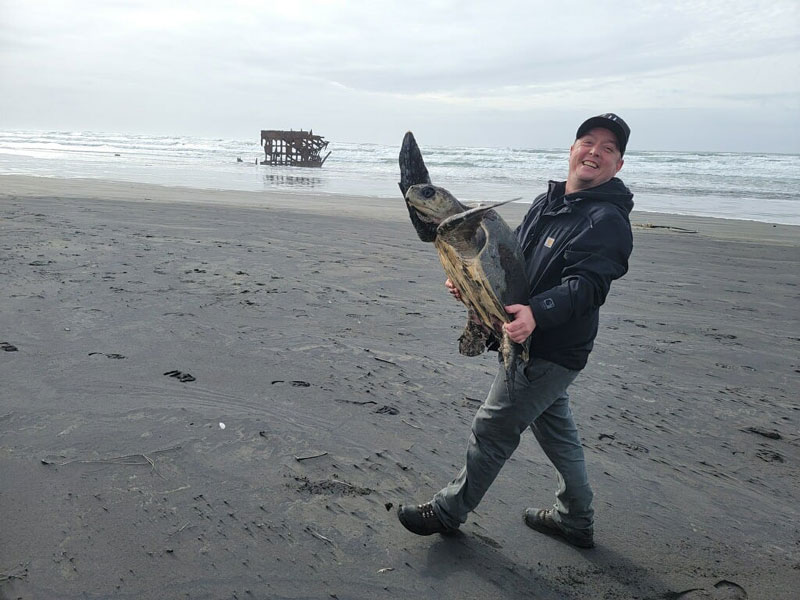
Image via / Corinne Reeves / Oregon Coast Beach Connection
Aquarium staff quickly loaded up the 50 lb. turtle and readied it for transport south. She was going to the Oregon Coast Aquarium in Newport. The facility is one of two licensed rehab facilities for sea turtles in the Pacific Northwest; the other facility is the Seattle Aquarium.
“While we are all hopeful for the recovery and release, everyone involved knows that this turtle has a long road ahead.”
The Olive Ridley Sea Turtle was suffering from severe hypothermia, although thankfully no external injuries were found. According to the aquarium, "cold-stunning" presents complications that are difficult to identify and resolve. It can lead to malnourishment, susceptibility to external injuries, and organ damage. The process of raising a sea turtle’s body temperature is risky as well; it must be slow and steady to ensure the animal’s system is not shocked.
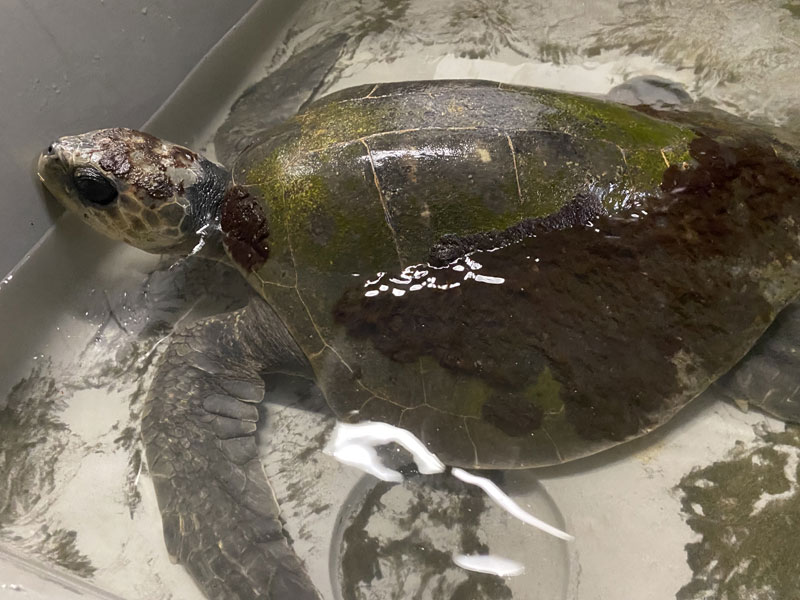
Image via / Seaside Aquarium
This is the time of year when cold-stunned turtles are stranded on the Oregon coast and Washington coast, and the public is asked to keep a lookout for them and call authorities if you find one.
According to Oregon Coast Beach Connection, if the turtles are found alive they often don't last long. But some survive and are released back into the wild. What often happens is that a sea turtle does not make it back to warmer waters in time as they migrate south, or they get lost tracing warm water currents going northward and they hit the cold waters of the Oregon and Washington coast.
The Oregon Coast Aquarium said this indicates "a change in ocean conditions and the potential for more strandings as winter approaches."
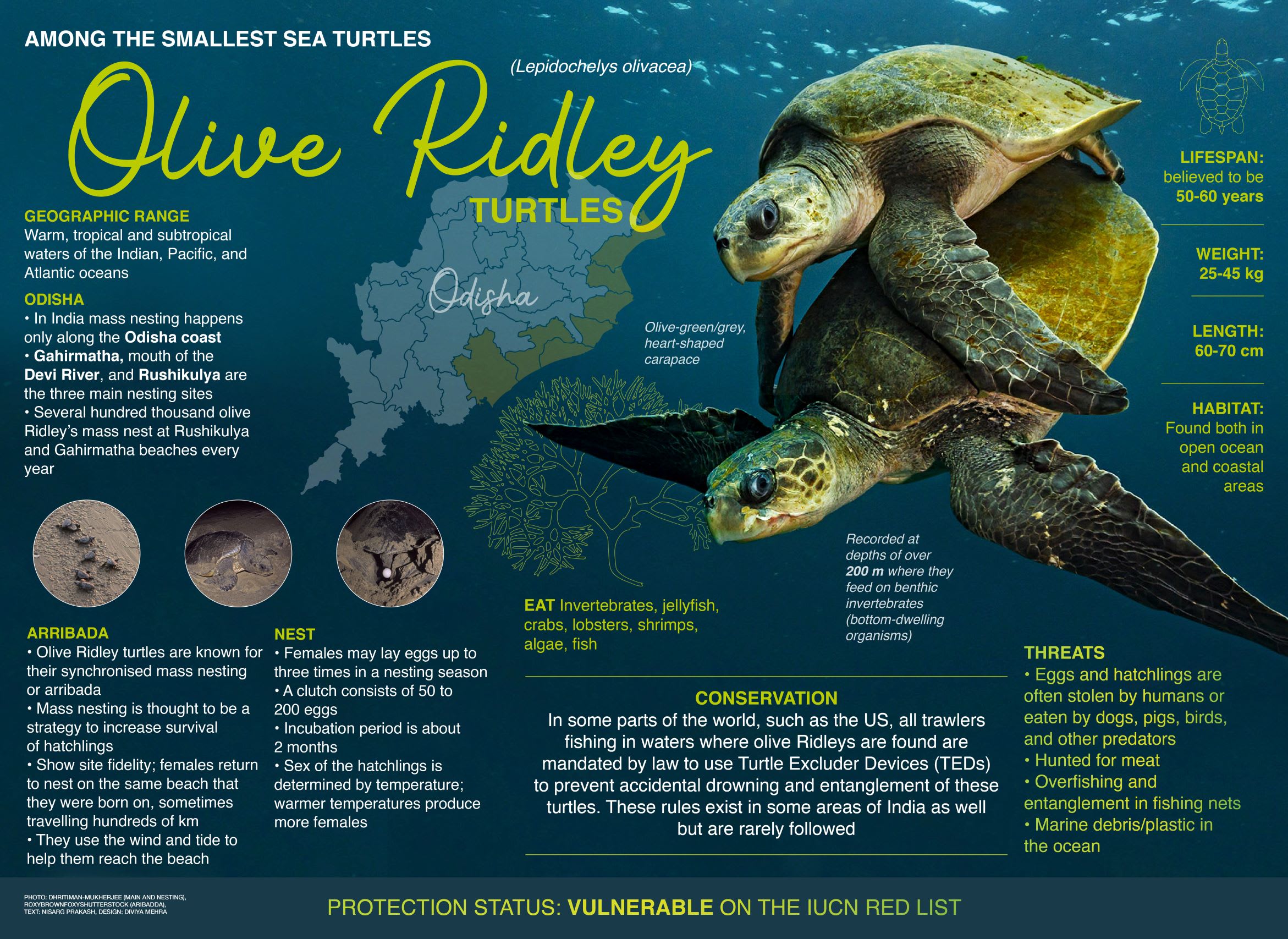
Olive Ridley Sea Turtle Infographic
When stranded turtles are reported and transported to the Oregon Coast Aquarium, staff assess the animal and take measures to stabilize it, with the ultimate goal of rehabilitation and release. While the odds of successfully rehabilitating stranded sea turtles are low, the Aquarium will continue these efforts to save endangered species, with the hope that even one saved turtle can help species recovery.
If you find an injured or cold-shocked sea turtle or other marine creature washed up on the beach, immediately note its location, remain nearby to observe it, and contact the Oregon State Police Tipline at 800-452-7888 or the Marine Mammal Stranding Network (MMSN) in Oregon, Washington, and California at 1-866-767-6114.

